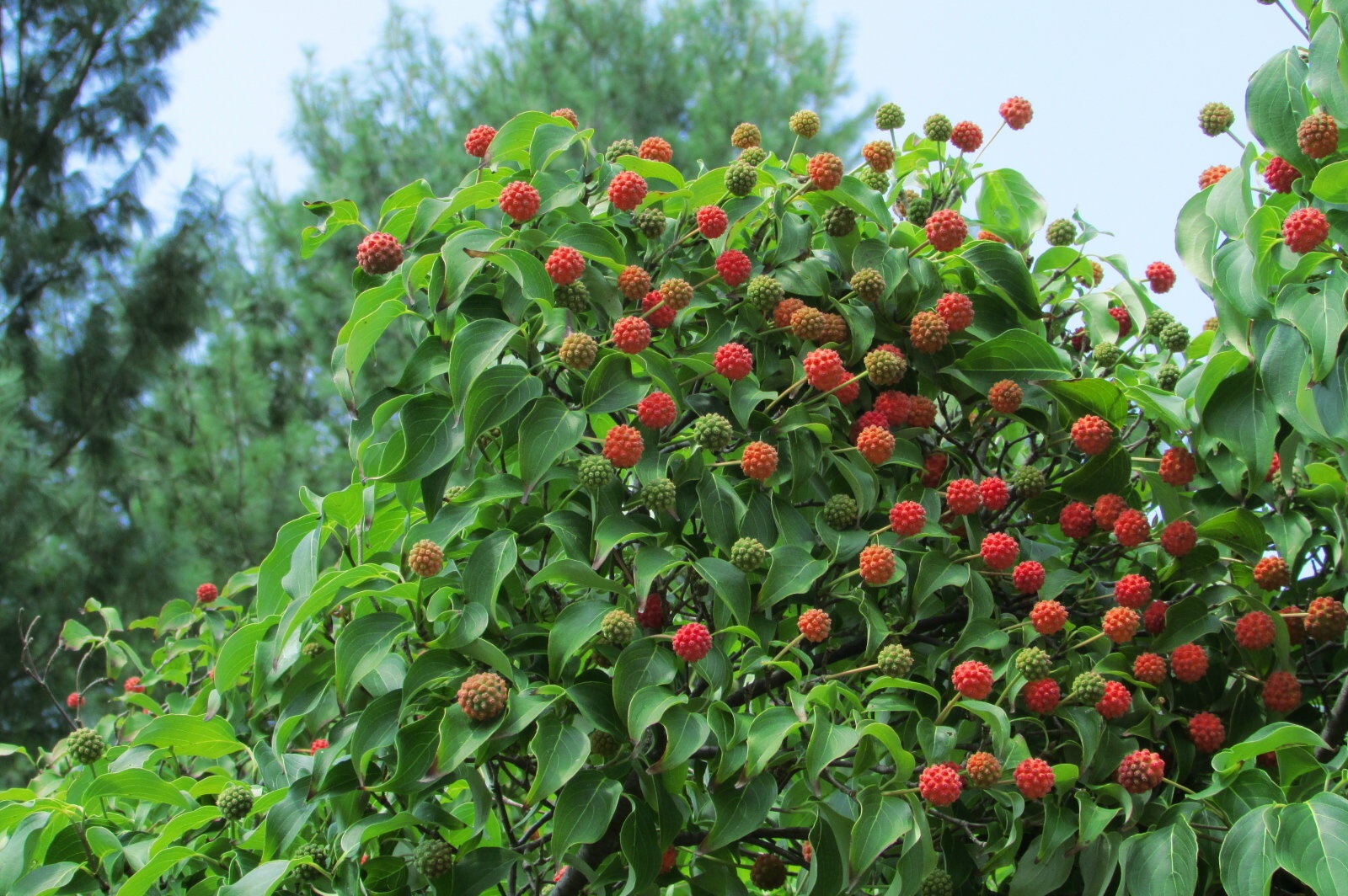Dogwood trees, known for their stunning beauty and deciduous nature, come in various sizes and produce delicious fruits. These trees, adorned with red berries, are small to medium in size and offer a delightful addition to any landscape. There is a wide range of dogwood varieties, each with its unique color of berries. Most dogwood trees boast lance-shaped leaves, white star-shaped flowers, and bark that peels gracefully.
Among the dogwood trees that bear red berries, the kousa dogwood is the most common. This particular tree is highly sought after due to its appealing shape, delectable globe-shaped red berries, and breathtaking red and purple foliage during the fall season.
It is crucial to be able to identify the species of dogwood trees that produce red berries, as not all of them yield edible fruits. For instance, out of the three dogwood species that bear red berries, namely Cornus kousa, Cornus mas, and Cornus florida, only Cornus kousa and Cornus mas produce edible fruits. However, it is important to note that the red berries of Cornus florida are mildly poisonous.
Dogwoods, besides being small to medium-sized trees, are also recognized as shrubs due to their vibrant red bark. These red-twig dogwood shrubs enhance the visual appeal of winter landscapes by adding a pop of color. However, small dogwood trees are equally valuable in garden landscapes.
This article serves as a guide to identify the species of dogwood trees with red berries. Detailed descriptions and accompanying pictures of the trees’ red fruits, leaves, and bark will assist in recognizing dogwood trees that produce red berries within any given landscape.
A. Are Dogwood Fruits Edible?
Edible dogwood fruits include the red berries of two species: the popular kousa dogwood (Cornus kousa) and the Cornelian cherry dogwood (Cornus mas). These tasty and sweet berries have hard seeds embedded within their flesh. However, the native flowering dogwood (Cornus florida) produces shiny oval berries that are inedible and grow in small clusters.
Distinguishing between edible red kousa dogwood berries, Cornelian cherry dogwood berries, and flowering dogwood berries is possible. Red kousa dogwood berries are round, resembling small red balls with bumpy skin. Conversely, berries from the other two species are shiny red oval drupes that grow in small clusters.
B. What Do Dogwood Red Berries Taste Like?
The sweet and delicious red berries of the kousa dogwood tree have a flavor reminiscent of soursop or persimmon fruits. People describe these berries as relatively sweet, creamy, and rich. Unfortunately, due to their numerous seeds and thick, bitter rind, consuming these small globular red fruits can be challenging.
C. Common Types of Dogwood Trees With Red Berries
There are three common types of dogwood trees known for producing red berries: the kousa dogwood, Cornelian cherry dogwood, and flowering dogwood. These trees can be identified by their lanceolate leaves, measuring 2.4 to 5.1 inches (6-13 cm) in length. Among them, the flowering dogwood displays the most striking blooms with large star-shaped white flowers.
D. Types of Dogwood Trees with Red Berries
Various types of dogwood trees produce berries. Two native North American species yield red oval berries, while the Asian kousa dogwood bears rounded, spherical red berries adorned with bumps on the skin. Continue reading to discover more about these exquisite flowering trees.
Kousa Dogwood (Cornus kousa)
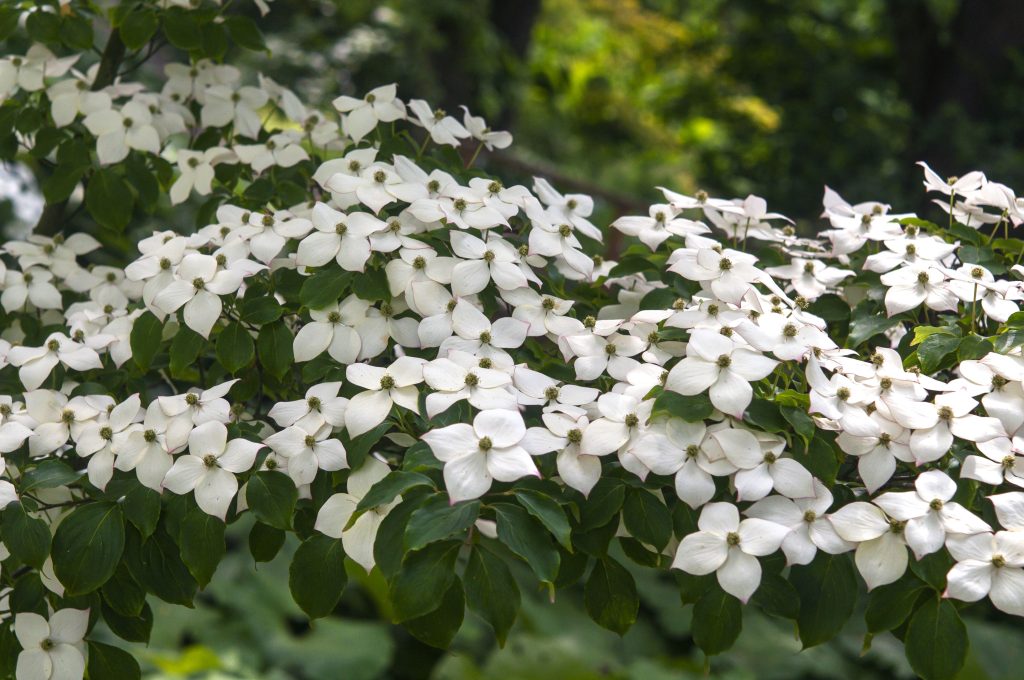
The kousa dogwood, a small deciduous tree, showcases magnificent white blossoms, round pink to red berries, and an elegant vase-shaped crown. This tree’s allure is enhanced by its dark green foliage, which transforms into shades of red during the autumn months. Its layered branches and mottled tan and gray bark add further aesthetic value.
Kousa dogwood trees typically grow between 15 and 30 feet (4-9 m) in height and width. In comparison to native dogwoods, the kousa variety has a more upright growth habit and blooms later than other species. The tree is identifiable by its vase-shaped structure, which gradually becomes rounded with age.
Thriving in USDA hardiness zones 5 to 8, the kousa dogwood prefers to be planted in areas with full sun to partial shade. It thrives in organically rich, well-drained soil. Once established, these berry-bearing trees exhibit relative drought resistance, although maintaining consistent soil moisture is essential.
Originating from eastern Asia, the kousa dogwood is also referred to as Chinese dogwood, Korean dogwood, or Japanese dogwood. It is widely cultivated throughout the United States as a charming small tree used for ornamental purposes.
Kousa Dogwood Berries

The edible fruits of the kousa dogwood tree are red berries with a globular shape, a tough, rough outer skin, and small bumps. These vibrant berries, ranging from bright pink to red (and sometimes orange), resemble large individual cherries. Each fruit hangs from the end of a slender, elongated stem. The flesh of the berries has a soft, slippery consistency reminiscent of custard.
Kousa dogwood berries measure between 0.78 and 1.1 inches (2-3 cm) in diameter. Some people liken the appearance of these berries to that of round lychee fruits.
Red dogwood berries belong to the category of aggregate fruits, much like blackberries or raspberries. However, they maintain the appearance of a single rounded fruit. These berries emerge during the summer months following the tree’s blooming phase and remain on the tree until autumn.
Kousa Dogwood Leaves
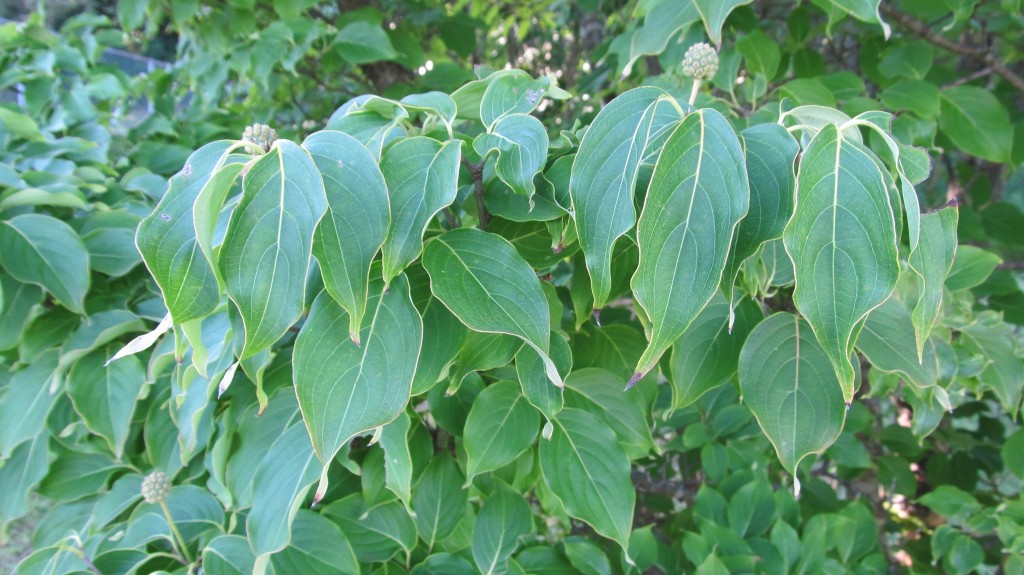
Leaves on a kousa dogwood tree are lustrous and dark green, featuring simple oval to lanceolate shapes. They grow in opposite arrangements along the branches, forming a dense foliage. These thick leaves provide excellent shade and shelter throughout the spring and fall seasons.
During autumn, kousa dogwood trees undergo a stunning transformation, displaying vibrant shades of burgundy red that transition into deeper tones of purple. Furthermore, certain ornamental varieties of dogwood showcase variegated leaves, further enhancing their decorative appeal.
One such variety is the kousa dogwood ‘Kristin Lipka’s Variegated Weeper,’ which boasts green and creamy-yellow leaves.
Kousa Dogwood Bark
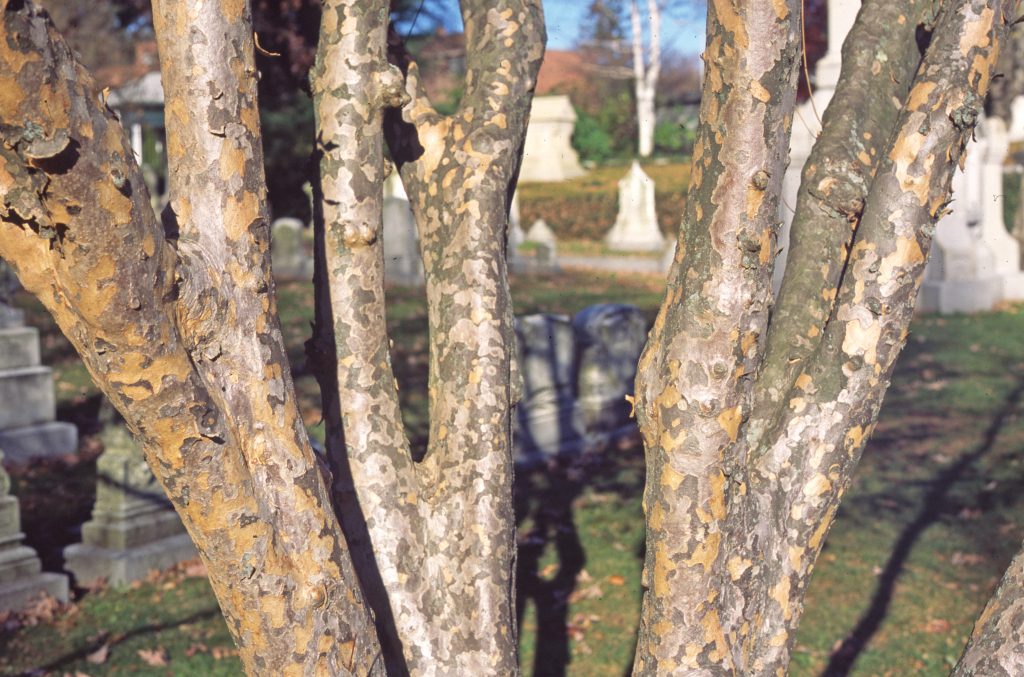
The bark of kousa dogwood trees showcases an intriguing mix of gray, pink, and beige tones, making it easily identifiable. This visually appealing bark ranges from light to dark grayish-brown and exfoliates as the tree matures, revealing patches of reddish-brown and tan. The smooth texture of the bark lends mature trees a camouflaged appearance.
Kousa Dogwood Flowers

Kousa dogwood trees burst into bloom during the spring season. The tree becomes adorned with numerous white, star-shaped flowers that create a colorful spectacle. These flowers are actually small green blossoms surrounded by four pointed, snow-white bracts. The blooming period typically extends from spring to early summer.
Kousa dogwood flowers appear long after the tree has sprouted its leaves, usually in May—about a month later than other dogwood species, which typically bloom in April.
Kousa Dogwood Seeds

The seeds within the red berries of the kousa dogwood measure approximately 0.25 inches (0.6 cm) in length. Oval in shape, these seeds closely resemble elongated grape seeds. By soaking and cold-stratifying the dogwood seeds for 60 to 90 days, you can use them to propagate new trees.
Kousa dogwood trees have a relatively slow growth rate, increasing in height by 12 to 24 inches (30-60 cm) annually. Eventually, they reach a mature height ranging from 15 to 25 feet (4.5-7.6 m), although optimal conditions can allow them to reach up to 30 feet (9 m) in height.
E. Where to Grow Kousa Dogwood Trees
Kousa dogwood trees thrive in acidic, nutrient-rich soil with good drainage. They prefer full sun or partial shade, tolerating up to six hours of direct sunlight daily. In hotter climates, providing some shade during the afternoon helps maintain the tree’s health.
F. How to Identify Kousa Dogwood Trees
Kousa dogwood trees can be easily identified by their distinctive mottled bark and red fruits. The grayish bark of these trees peels off, revealing patches of reddish-pink or beige-tan underneath. Additionally, they produce red berries measuring 0.78 to 1.1 inches (2-3 cm) in diameter. Lastly, their white flowers and deep green lanceolate leaves that turn red in autumn are further distinguishing features.
Flowering Dogwood (Cornus florida)

Flowering dogwood trees make a striking addition to any landscape, featuring a rounded or flattened crown, pure white flower-like bracts, and clusters of orangey-red fruit. These trees possess remarkable ornamental appeal, thanks to their dark green foliage, white flowers, red berries, and pleasing shape.
With a typical height and width range of 15 to 30 feet (4.5-9 m), flowering dogwoods are characterized by their pyramidal crown, which flattens as the tree matures. These trees are considered to have a medium growth rate, growing approximately 16 feet (5 m) over a span of ten years. Their lifespan averages 80 years.
Flowering dogwoods are native to North America and are particularly popular as landscaping trees in Florida. In fact, the flowers of these trees are the state flower of North Carolina. They are hardy in USDA zones 5 to 9.
Many gardeners regard flowering dogwoods as one of the most spectacular landscaping trees due to their distinctive alligator skin-like bark, clusters of glistening fruits, and vibrant shades of scarlet and purple during the fall season. These features contribute to their year-round visual appeal.
Flowering dogwood leaves
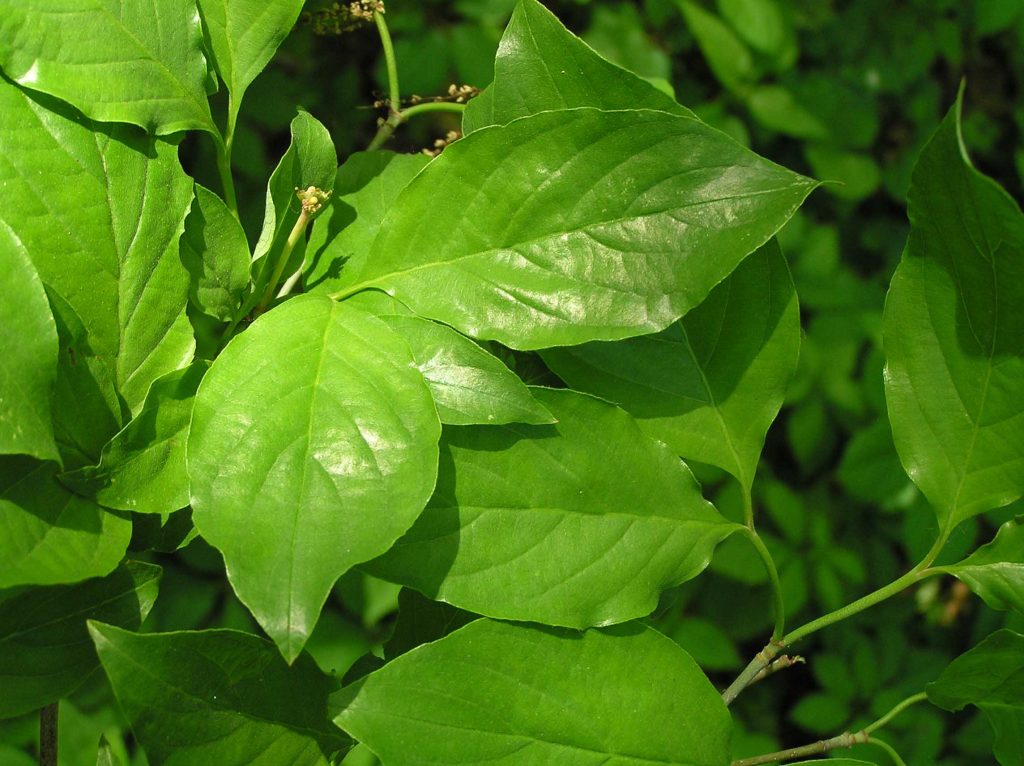
Leaves of the dogwood tree are ovate-shaped, measuring 3 to 6 inches (7.5-15 cm) in length. These smooth leaves exhibit characteristic veins that curve towards the tip and typically have slightly wavy margins. However, identifying dogwood trees based on their leaves alone can be challenging.
Flowering dogwood berries

The red berries of flowering dogwood trees are not suitable for consumption, as they possess a bitter and unpleasant taste. These berries, shaped like ovals, are bright red and grow in small clusters on the tree. While inedible for humans, they attract birds when they appear from August through October.
Poisonous flowering dogwood berries differ in appearance from kousa dogwood berries. The drupes of flowering dogwoods are shiny, red, and smooth-skinned, whereas the edible kousa dogwood fruits are round with a leathery skin covered in bumps.
Flowering dogwood bark
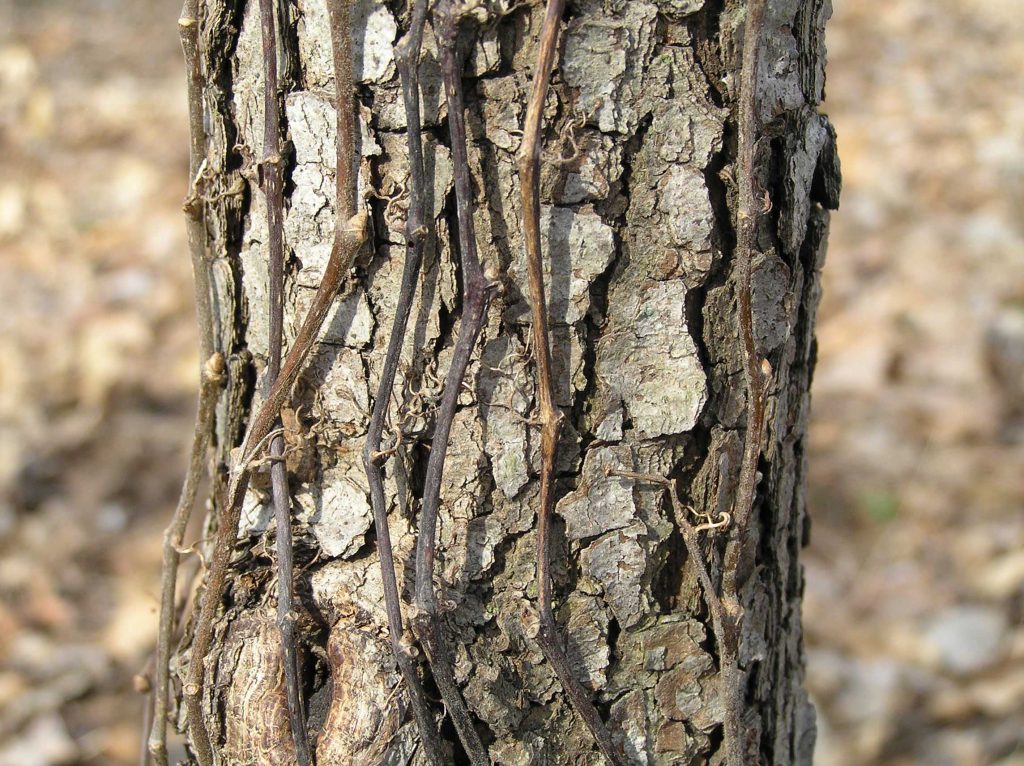
Aside from the red berries, another distinguishing characteristic of flowering dogwood trees is their unique bark. Young trees have smooth, gray bark, while more mature trees display a distinct alligator-like texture. The bark has a mosaic-like pattern consisting of small, rectangular blocks. The bark’s color ranges from dark gray to reddish-brown.
In conclusion, dogwood trees with red berries, such as the kousa dogwood and the Cornelian cherry dogwood, offer both aesthetic beauty and edible fruit. Their lovely white flowers, colorful foliage, and distinctive bark make them desirable additions to any landscape. However, it’s essential to differentiate between edible and inedible dogwood berries and to consider the specific requirements of each tree when planning to grow them in your garden.
